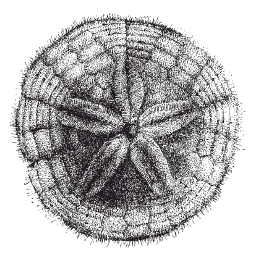Watching Over Our Native Species as Carefully as We Tend Our GardensBy Laura Hendricks Planting our gardens and not so patiently waiting for the summer flowers and vegetables is an annual ritual for many of us. At the same time we are working so hard to establish healthy gardens, our treasured aquatic native animals and plants are on their own, growing and trying to survive the elements and changing climate conditions. Kelp forests are growing now that provide habitat for spawning, rearing, refuge and food. Eelgrass meadows are exposed once more that provide a home for forage fish - surf smelt, herring and sand lance which are a major food source for salmon.
Unlike the gardens we plant each year, our native animal and plant species cannot be grown from a seed, bought at a store or transplanted from stock from a neighbor. Far too many citizens in South Puget Sound have been watching large shellfish companies expand using industrial methods that are removing/destroying our native animal and plant species and dredging tidelands that eliminate the prey species for native species, including salmon. With the increased densities of planted shellfish resembling marine feedlots, native species are attracted by the availability of food and then are removed/destroyed or harassed. Starfish are piled up covered with lime or injected with bleach, sand dollars are removed from their beds and left on the upper beach to die, crabs are being dismembered, moon snails are tossed like baseballs above the banks and masses of adorable scotor ducks are being shot and left to die on the shorelines. Essential marine vegetation is being raked up and carted away. Eagles have been seen caught in geoduck feedlot nets, left to drown if they cannot free themselves. Not only is it disturbing to witness this destruction, but industry outlines the "use of deterrents, exclusion or destruction" of native species in their 2015 Goals and Priorities. In a recent shellfish industry meeting in Willapa Bay held to finalize their document "Pest Management Strategic Plan for Bivalves in Washington and Oregon, it was disheartening to hear our non-commercial native animals considered to be "toss aways" and our essential marine vegetation classified as "weeds." We must continue to support those companies that strive for small scale, sustainable shellfish production who value our native species and their habitat. Citizens have reported the destruction they have witnessed to state agencies, but empty promises are made and the destruction continues acre after acre as these large corporations expand. It is time to let officials know that native species belong to the citizens of Washington and we want to see our native species thrive, not be the next species added to the endangered species list. For questions, visit our website at: http://washington.sierraclub.org/tatoosh/Aquaculture/index.asp Laura Hendricks is the Chair of the Shorelines and Aquaculture Sub-committee, Sierra Club, Cascade Chapter.
Back to Home page. |

 Low spring tides allow exploration of the many creatures that both children and adults love to see when they take that stroll on the shoreline to relax. A price cannot be put on the squeal of joy when a red rock crab, moon snail, starfish, sculpin, flounder or sand dollar is seen. There is a springing forth of life as birds such as eagles, hawks, osprey, gulls, crows and heron hatch their young and can be observed as they use the food of the low tides to feed these hatchlings. The cycle of spring leads to fry/smolts of Chinook salmon, in particular, being washed out of their natal streams into salt water estuaries. The warmth of the longer days promotes beneficial insect hatching to benefit the nearshore salmon and the marine birds.
Low spring tides allow exploration of the many creatures that both children and adults love to see when they take that stroll on the shoreline to relax. A price cannot be put on the squeal of joy when a red rock crab, moon snail, starfish, sculpin, flounder or sand dollar is seen. There is a springing forth of life as birds such as eagles, hawks, osprey, gulls, crows and heron hatch their young and can be observed as they use the food of the low tides to feed these hatchlings. The cycle of spring leads to fry/smolts of Chinook salmon, in particular, being washed out of their natal streams into salt water estuaries. The warmth of the longer days promotes beneficial insect hatching to benefit the nearshore salmon and the marine birds.